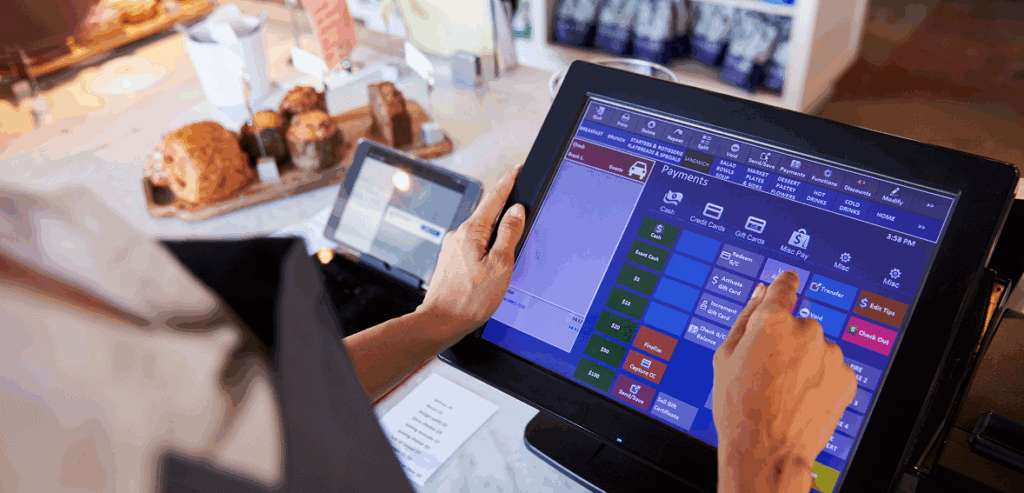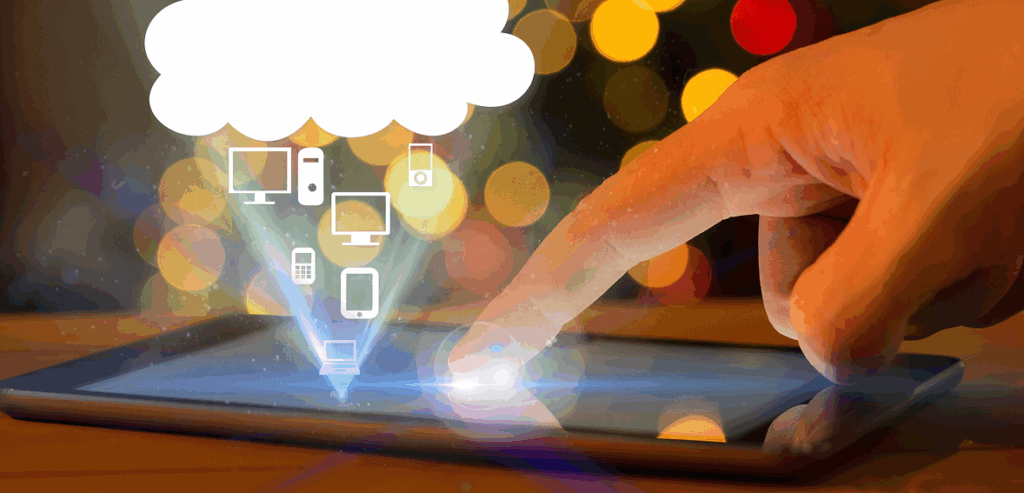
By KarenDUhl April 18, 2025
In the world of retail, efficiency isn’t just a bonus—it’s a necessity. Whether you’re managing inventory, processing sales, or analyzing performance, every moving part of your store contributes to the overall customer experience. That’s why choosing the right point-of-sale (POS) software is one of the most important decisions you can make for your retail business.
Modern POS systems have evolved far beyond simple cash registers. Today’s software comes packed with smart features that can help you save time, reduce costs, and improve service.
The Role of POS Software in Retail Efficiency

Retail operations involve a series of repetitive and time-sensitive tasks. From restocking shelves and updating prices to tracking sales and scheduling employees, small inefficiencies can add up quickly.
Let’s first understand how POS software supports smoother workflows and more informed business decisions.
More Than Just a Checkout Tool
While many still associate POS systems with the register, modern POS software is an operational hub. It connects sales, inventory, customer data, reporting, and even employee management in one central platform. This eliminates the need for multiple disconnected tools and creates a streamlined, real-time view of your business.
When these features work together, they reduce errors, improve response times, and help you stay one step ahead of demand.
Why Streamlining Matters
In retail, delays mean dissatisfied customers and lost revenue. Long checkout lines, out-of-stock products, and manual reconciliation not only waste time—they hurt your brand. With the right POS system, many of these problems can be addressed automatically, freeing up staff to focus on customer engagement and sales growth.
By making core functions faster and smarter, POS software transforms how your business operates.
Inventory Management Made Easy
Inventory control is one of the most essential—and often most time-consuming—aspects of retail. Fortunately, modern POS software offers robust tools to simplify this task and reduce human error.
Let’s explore the features that support real-time inventory management and help you maintain the perfect stock levels.
Real-Time Stock Tracking
With POS-integrated inventory tools, every sale updates your stock levels instantly. This ensures that your numbers reflect reality—not yesterday’s estimate.
Whether you’re running a single shop or managing multiple locations, having access to live inventory data allows you to avoid stockouts and overordering.
Low Stock Alerts and Auto-Reorders
Smart POS systems let you set minimum stock thresholds for each product. When inventory drops below that level, the system notifies you—or even places an order automatically.
This feature is especially useful during peak seasons, when manually checking stock could lead to missed sales opportunities.
Variant and Matrix Inventory Support
If you sell items in different sizes, colors, or styles, managing them manually can be a nightmare. POS systems with matrix inventory features let you track product variants efficiently, grouping them under a single parent item.
This keeps your inventory clean, organized, and easier to analyze.
Speeding Up the Checkout Process

The checkout experience is often the final impression your customer has of your store. An efficient, fast transaction leaves them satisfied. A slow or glitchy process? Not so much.
Here’s how POS software can improve your checkout efficiency while keeping customers happy.
Barcode Scanning and Quick Keys
POS systems with barcode support and custom quick keys reduce the time spent searching for products or typing in prices. Whether you’re scanning apparel, food, or electronics, each item is pulled up instantly—streamlining the entire process.
Quick keys can also be used to speed-sell popular items or apply frequent discounts.
Integrated Payments
Instead of manually entering totals into a card reader, integrated payments allow the POS to handle everything in one step. Customers can tap, swipe, or insert their card, and the transaction is completed without switching devices.
This not only saves time but also reduces the chance of costly input errors.
Support for Multiple Payment Types
A flexible POS system supports credit/debit cards, mobile wallets, contactless payments, and even store credit or loyalty rewards. Accepting a wide range of payment methods ensures you never turn away a customer due to limitations at the counter.
Simplifying Employee and Shift Management
Staff scheduling and performance tracking are another area where POS software can save time and increase productivity.
Let’s look at how workforce tools built into your POS system can help you manage teams more effectively.
Clock-In/Clock-Out Functionality
With time tracking built into the POS, employees can clock in and out directly from the register. This eliminates the need for separate timekeeping systems and provides accurate, timestamped records for payroll.
Some systems also allow role-based access, so only authorized staff can perform certain actions.
Sales Performance Tracking
Many POS platforms track individual employee sales, returns, and productivity. This information is valuable for performance reviews, goal setting, and incentive programs.
It also helps you spot training gaps or identify your top-performing team members.
Shift Scheduling Tools
Some POS software includes basic scheduling features that let you assign shifts, manage time-off requests, and ensure coverage during peak hours. While not as robust as standalone HR tools, these features are helpful for small businesses looking to simplify staffing.
Customer Relationship Management (CRM) Integration
Your customers are your business. POS systems with built-in CRM capabilities help you create better relationships through personalization, loyalty programs, and targeted promotions.
Here’s how CRM features within POS software can drive repeat visits and deeper engagement.
Customer Profiles and Purchase History
Each time a customer shops, the system records their name, contact info, and transaction history. Over time, this creates a valuable database that allows you to understand preferences and buying habits.
With this insight, you can tailor promotions, personalize service, and encourage more frequent visits.
Loyalty Program Integration
Loyalty features within your POS software let you reward returning customers automatically. Whether it’s a points system, discounts after a certain number of purchases, or exclusive member offers, these programs are easier to manage when built directly into the POS.
Marketing Tools and Email Campaigns
Some POS systems include basic marketing tools that allow you to send promotional emails, birthday greetings, or sale alerts directly from your dashboard.
These tools help you stay connected to customers after the sale—encouraging long-term loyalty and increased lifetime value.
Advanced Sales Reporting and Insights
Numbers don’t lie. POS software with detailed reporting features gives you a clear view of what’s working, what’s not, and where you can improve.
Let’s look at how reporting can help retailers make better decisions every day.
Daily Sales and Product Performance Reports
View real-time data on your top-selling products, busiest hours, and average transaction size. This information helps you optimize stock, staff schedules, and merchandising efforts.
Most systems allow you to generate daily, weekly, and monthly sales summaries at the click of a button.
Category and Department Analysis
Break down performance by product categories or store departments to see which areas are thriving—and which need attention. This is especially useful for larger stores or businesses with diverse product lines.
Customer and Sales Trend Reports
Understand customer frequency, average spend, and seasonal behavior. Use this insight to plan marketing efforts, introduce new products, or adjust pricing strategies based on real-world data.
Multi-Channel and Multi-Location Capabilities
If you sell online and in-store, or manage more than one location, having a POS system that brings everything together is essential.
Here’s how cloud-based and multi-channel POS features can simplify retail operations for growing businesses.
Omnichannel Sales Sync
Unified systems sync orders from your website, mobile app, and physical store. This ensures accurate inventory across platforms and allows customers to shop seamlessly between channels.
For example, a customer might buy online and pick up in-store, or return an item purchased from your website. With the right system, these interactions are smooth and professionally managed.
Multi-Store Management
If you operate more than one store, centralized POS software lets you view performance, inventory, and staffing across all locations. You can transfer stock, compare sales by location, and manage everything from a single dashboard.
This feature reduces administrative overhead and keeps your business consistent across locations.
Cloud Access and Mobile Tools

Cloud-based POS software lets you access reports, manage inventory, and view customer data from anywhere. Many platforms also offer mobile apps so you can monitor performance on the go.
This flexibility is especially valuable for owners and managers who can’t always be in-store.
Key Considerations Before Choosing a POS System
With so many features and providers available, it’s important to choose a POS solution that fits your business size, model, and goals.
Here are a few final things to keep in mind.
Ease of Use
No matter how powerful the software is, it won’t help your business if it’s difficult to use. Look for systems with intuitive interfaces, helpful tutorials, and responsive customer support.
Scalability and Flexibility
Choose a platform that grows with you. Whether you’re opening a second store, expanding into online sales, or adding more staff, your POS should adapt to your changing needs.
Integration With Existing Tools
If you already use accounting software, eCommerce platforms, or marketing tools, make sure your POS system integrates with them. The more connected your systems are, the more efficiently you can operate.
Conclusion
The right POS software does more than process payments—it streamlines every corner of your retail operation. From inventory and checkout to customer engagement and reporting, integrated features help you save time, reduce errors, and improve your customer experience.
As retail evolves, staying competitive means working smarter. With the right tools in place, you’ll spend less time on manual tasks and more time growing your business.
Investing in a POS system with the features mentioned above isn’t just about convenience—it’s about building a more agile, data-driven, and customer-focused retail operation that can thrive in any market.